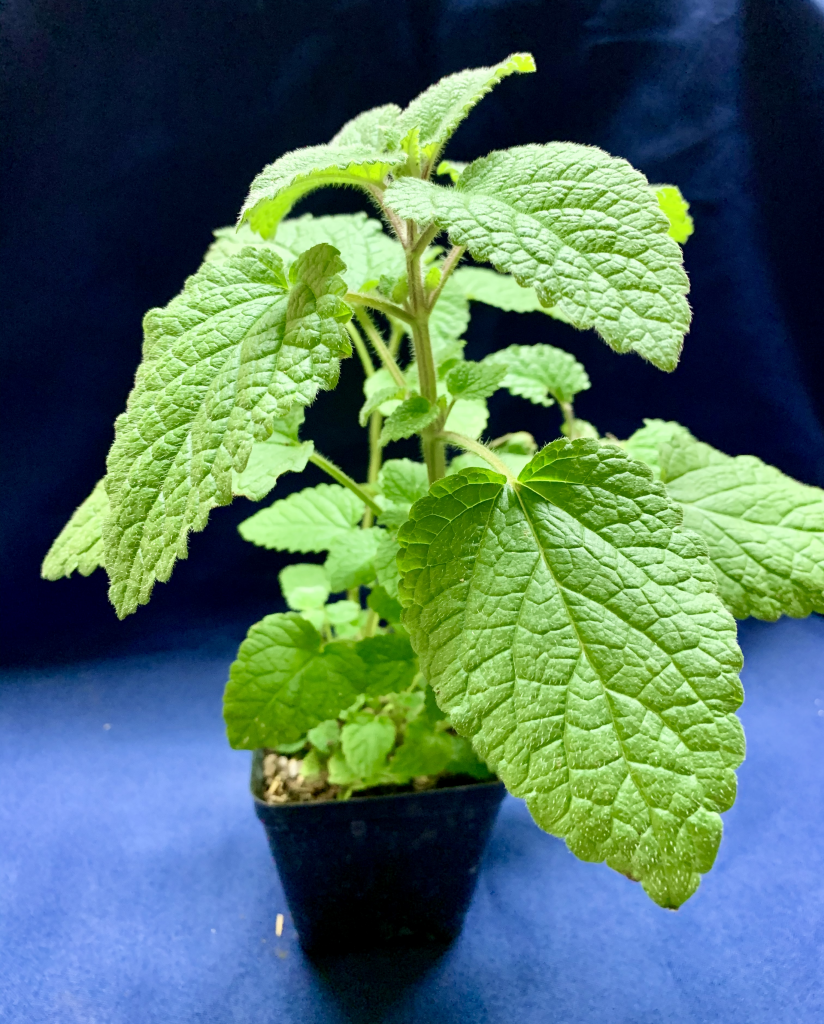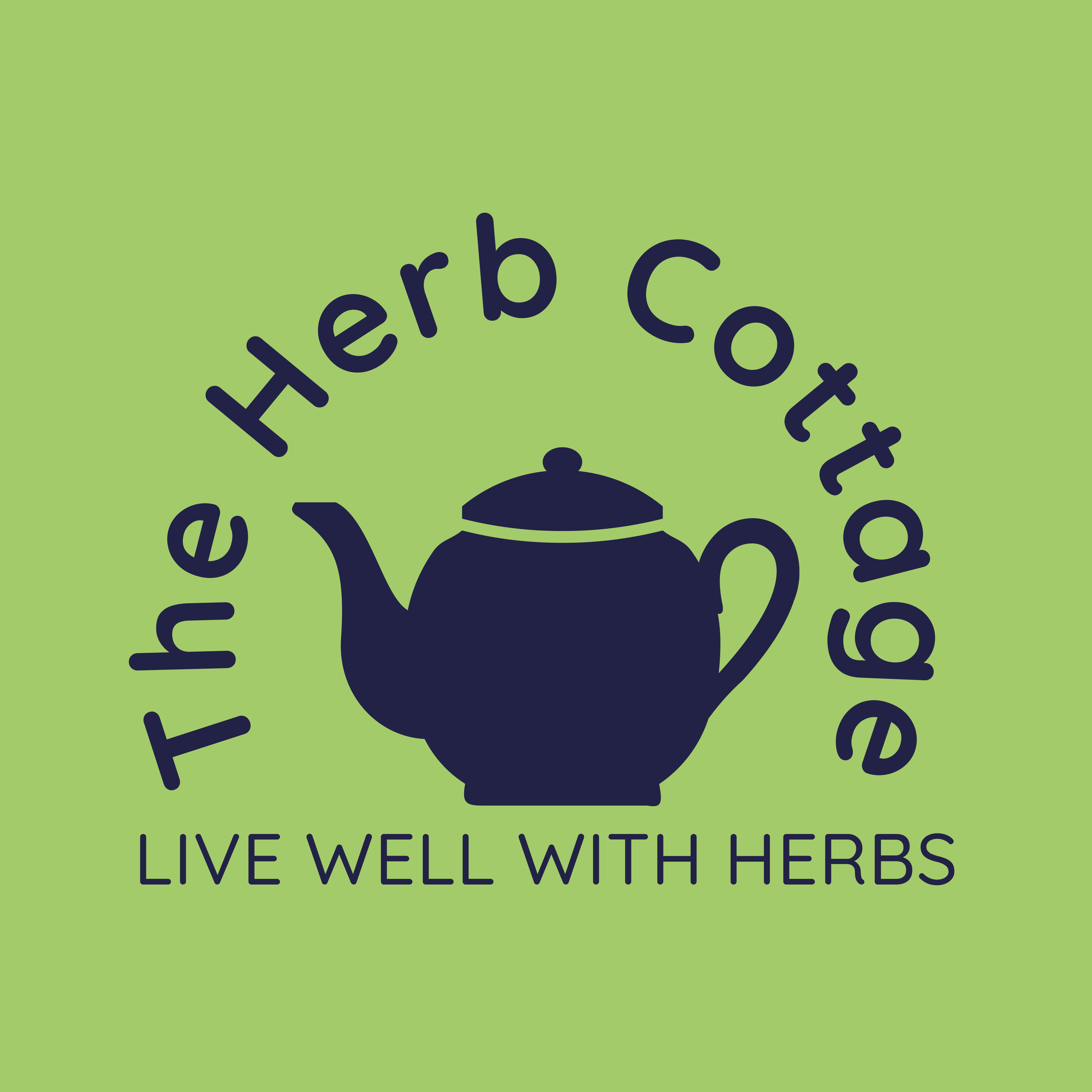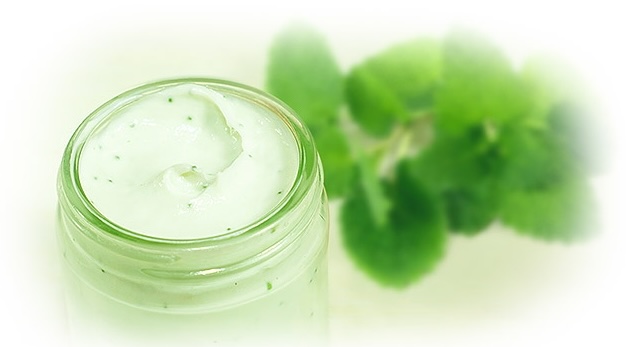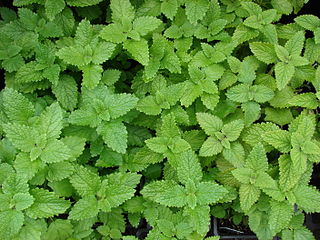
Lovely Lemon Balm (Melissa officinalis) is one herb I never want to be without in my herb gardens or my apothecary. It is perennial here in South Central Texas, although some of our hot, drought-ridden summers can cause it severe damage. I cover it in the Winter when the temperatures are forecast to drop below about 25 deg. F. Low temperatures are common a few times a year here, but we do not suffer prolonged cold. In many areas, Lemon Balm might be an annual that would have to be planted every year or grown in a container and brought inside for the Winter.
Lemon Balm Tea
Lemon Balm is not only a bright, lemony tasting tea herb, it has many healthy attributes. Let’s look at it first as an aromatic and flavorful herb for tea. Lemon Balm tea has a minty lemon flavor that lends itself well to hot or iced tea. By itself, it is mild and soothing. The lemony flavor enhances the senses just from inhaling the steam. A cup of hot Lemon Balm tea on a cold day brings on memories of warm sunny days.
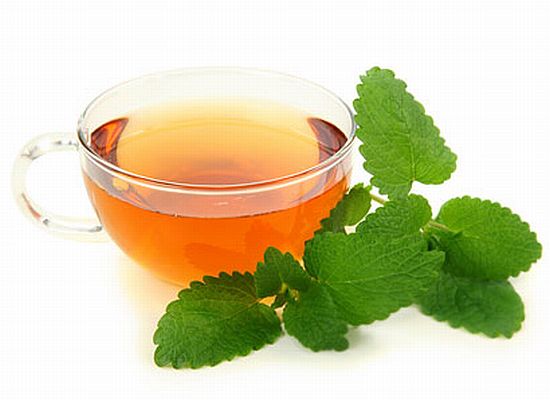
Other herbs are often added to Lemon Balm for a tea blend. Some herbs that I think blend well are Chamomile, Holy Basil (Tulsi), Peppermint, Spearmint, Hibiscus- especially for an iced tea, passion flower, green tea and lavender. In a blend, Lemon Balm adds not only citrusy flavor, but a subtle sweetness as well.
If you’re choosing to blend Lemon Balm with other herbs for a tea, a 50/50 ratio of Lemon Balm to another herb is a good place to start. Then, adjust the ratios to your own taste. The exception to that is if you’re using Lavender in the blend. Lavender has a floral aroma, but a bitter taste. Use lavender sparingly in tea blends.
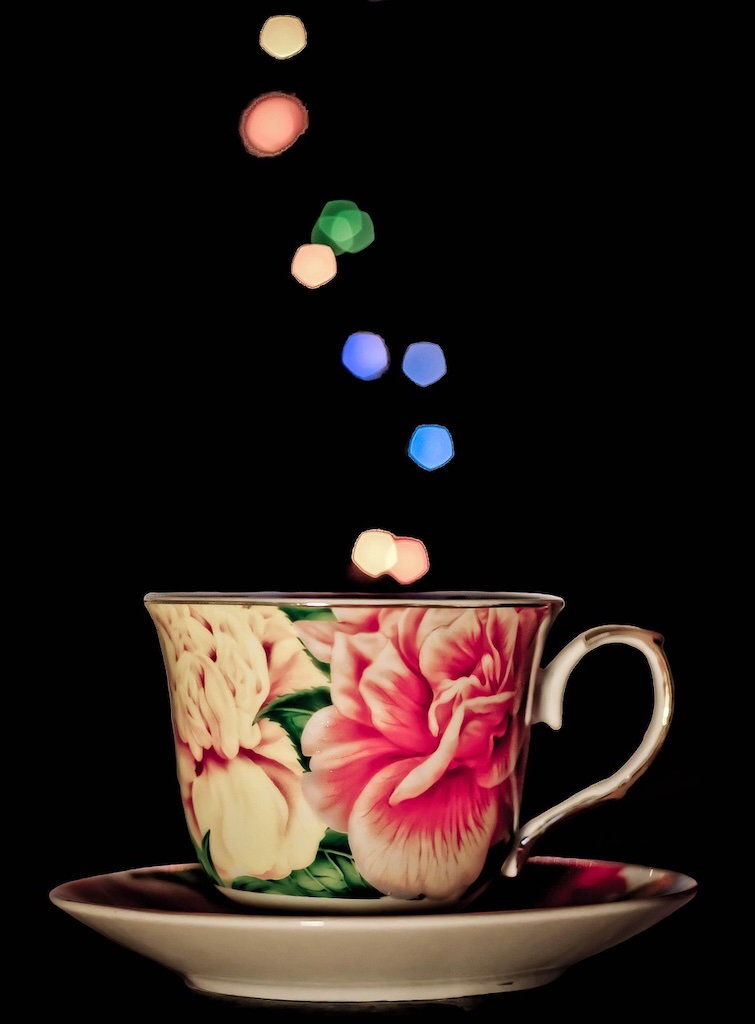
Lemon Balm Lavender Tea Blend
- For one cup of tea, 8 – 10 ounces of water
- 2 teaspoons dried Lemon Balm or 1 tablespoon chopped fresh Lemon Balm
- ¼ teaspoon dried or fresh Lavender buds
Place herbs in cup or infuser and add to the cup. Bring water to a boil then let it sit for a moment until the boiling action stops. Pour water over the herbs. Steep 10 minutes. Remove infuser or pour tea through a strainer to remove herbs. Add sweetener if desired. Inhale the aroma, sip and enjoy!
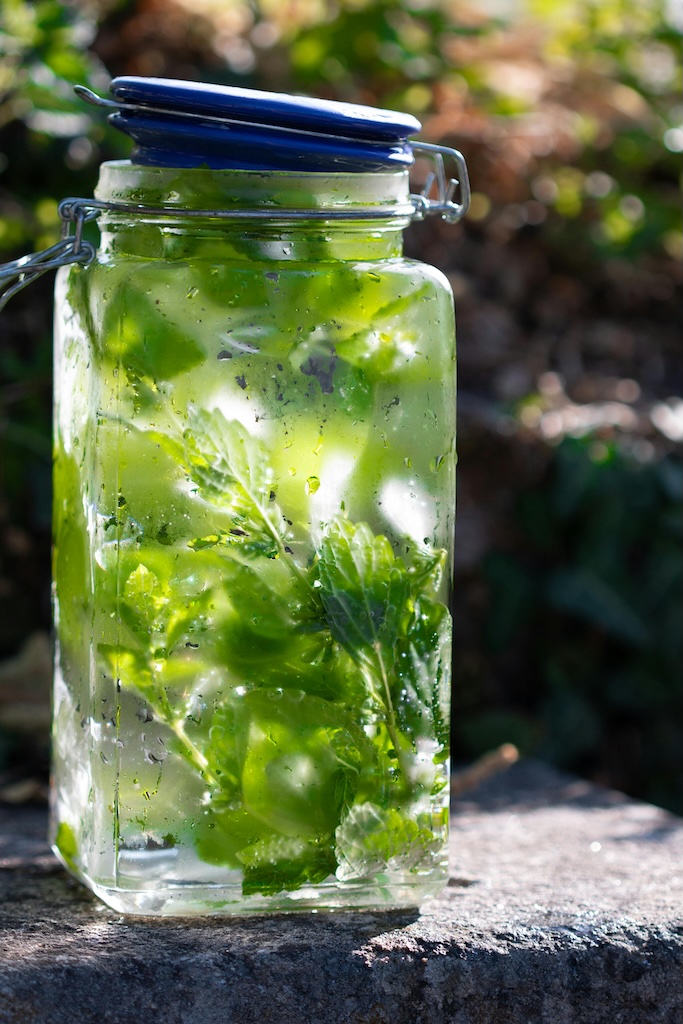
For a refreshing summer cooler, simply place a handful of fresh Lemon Balm leaves in a pitcher and add cool water. After about 30 minutes, the gentle lemon flavor is released into water. Enjoy this beverage instead of plain water on a hot day after working in the garden! This will keep in the fridge for a day or so. It’s such a good way to use the prolific growth of lemon balm, it’s something you can easily make fresh every day or two. Adding some sliced cucumber will enhance your beverage.
Some History
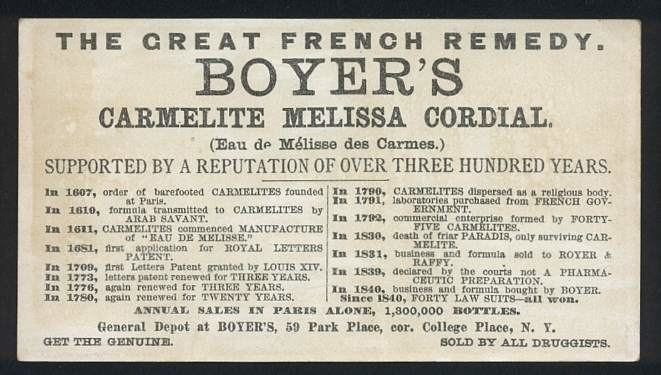
The uses of Lemon Balm go back hundreds, if not thousands of years. The first recorded use of Lemon Balm is around 300 BCE where it was called ‘Honey Leaf’ by a Greek scholar named Theophrastus. Coming into the Middle Ages, Lemon Balm was an important herb in Carmelite Water, a tonic drink with a mostly secret recipe made by Carmelite Nuns in the 14th Century.
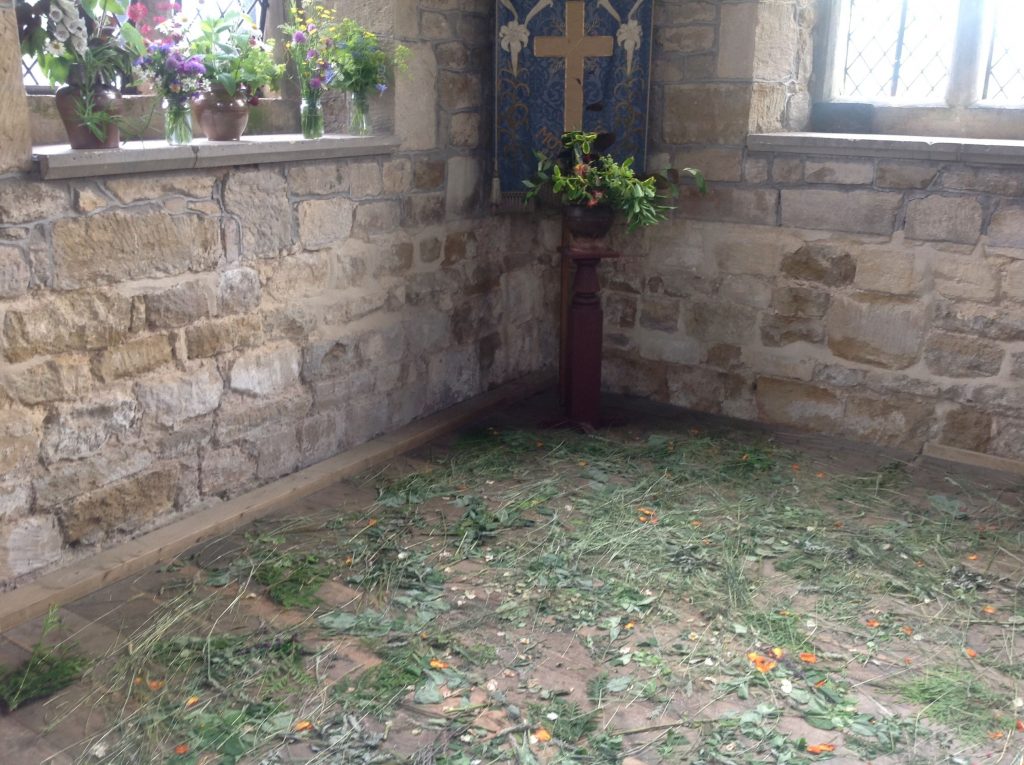
During the Tudor period in Western Europe, Lemon Balm was used as a strewing herb to freshen the air. Strewing herbs were common in households, churches and hospitals where fresh herb stems were strewn across the floor. The action of walking on the fresh herbs would activate the scent and the aromatic properties would be released into the air. Easy aromatherapy!
Health Benefits
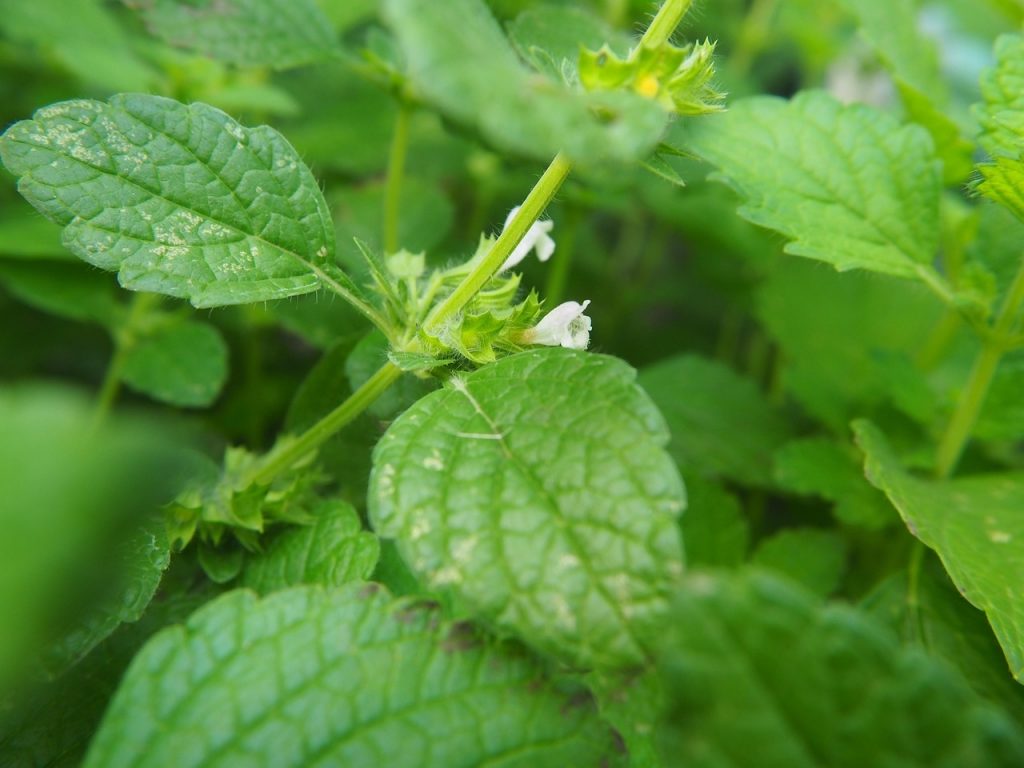
Since the uses of Lemon Balm go so far back in history, there is much experience using the herb for health and medicinal benefits. One of the most common uses of Lemon Balm that is still in use today is its action as a ‘nervine‘. It works on the nervous system to calm an overactive stress response. The sunny lemon aroma gives an emotional uplift as well as soothing the nerves. This property also makes Lemon Balm a lovely after dinner tea to aid digestion. It is sometimes used during a fever to calm restlessness. Taken before bedtime, a cup of Lemon Balm tea can help with restless sleep. It is safe for children to drink and has a pleasing flavor. Combining it with Chamomile adds to its calming properties.
Lemon Balm isn’t just used internally for its herbal benefits, it’s useful in a topical application as well. A carrier oil such as olive oil, sweet almond oil or jojoba oil can be infused with dried Lemon Balm and then made into a salve to treat bug bites and stings. An infusion of fresh or dried Lemon Balm in Witch Hazel makes a soothing skin toner and helpful spray for use on sunburn.
There is evidence of Lemon Balm having some antiviral properties. A Lemon Balm cream or salve seems to have a positive effect on the herpes simplex virus- the virus that causes genital herpes and mouth “cold sores”. Use of a Lemon Balm topical preparation shortens the length of the outbreak.
Lemon Balm Cream
Some Culinary Ideas
Tea and other beverages are not the only use of Lemon Balm leaves. Lemon Balm popsicles are a refreshing summer treat. The herb can be added to soups, stir fry and any dish where a lemon flavor is desired. Add chopped fresh leaves to a fruit salad for a lemony bite.
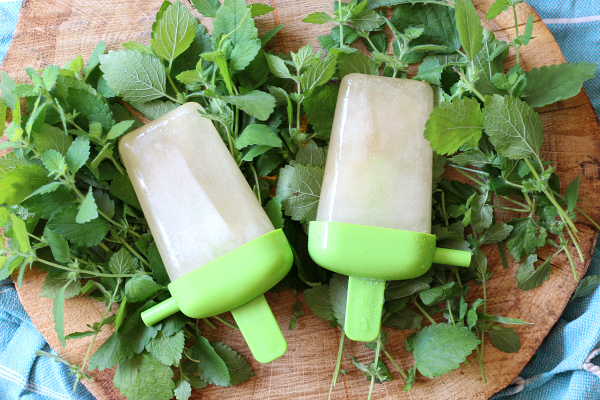
Lemon Balm Popsicles
- Decide how much you want to make.
- To each 8 ounces of water add 2 teaspoons of dried Lemon Balm or 1 tablespoon of fresh Lemon Balm to a heat proof container.
- Bring your measured water to a boil and pour over the herbs
- Steep for 15 minutes
- Strain
- Measure the amount of liquid you have. (I like to strain into a measuring cup for easy measuring)
- To the hot liquid add equal amounts of sugar, sugar substitute or honey. Stir to dissolve.
- Let cool a bit and pour into popsicle molds or ice cube trays.
- Freeze
- Enjoy!
You can use this herbed simple syrup to make an herbal soda. Just add a Tablespoon or so of the syrup to a glass, add ice and sparkling water. Stir and sip for a refreshing herbal soda. For an adult beverage, add your choice of liquor.
Growing Lemon Balm
Lemon Balm is in the mint family and as such, it likes a bit of shade and ample moisture. If it’s happy, it will spread in a similar manor to other mints. It generally grows to at least 2 feet tall and wide, at a minimum. The leaves can grow to 3 inches in length. Since it’s a large plant with large leaves, it can smother nearby plants if you’re not careful. It does beautifully in a large container which of course will keep it from overtaking nearby plants. Be sure to keep it watered and give it afternoon shade or a spot in dappled light.
Lemon Balm grows easily from seed, cuttings or a piece dug up from an established plant. It will withstand a mild freeze, coming back from the roots if the tops freeze back.
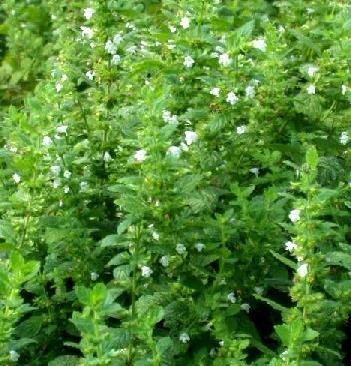
The flowers are tiny like other mints. They are creamy white to pinkish in color. The botanical name Melissa (Greek for ‘honey bee’ or ‘honey’) gives us a hint as how much bees love it. It also attracts other pollinators and butterflies. For harvest, you can generally cut it back by about half several times a season. This shearing tends to keep the plant in a more compact shape, too. Use the leaves fresh or dry them for later use. Try to avoid handling the fresh leaves too much since they tend to bruise easily and turn brown. When dried, Lemon Balm should still have a vibrant green color.
In Conclusion
In my opinion every herb garden needs Lemon Balm. It is not difficult to cultivate, has such a lovely flavor for tea and herb water and is useful as an ingredient in topical applications. Do yourself a favor and grow some Lemon Balm in your herb or flower bed.
